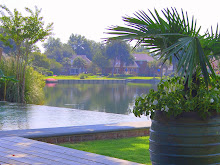We live in a beautiful and yet fragile place in the world. Stewardship is a responsibility that should not be taken lightly. Thoughtful and sustainable design is critical to us, our environment and future generations.
HEALTH
Plants and natural landscape elements can improve our quality of life. Physical activity, restorative and aesthetic experiences and social interaction play an important role in human health. Designing space for physical activity, social interaction and food production provides opportunities for better stewardship of our bodies, our relationships and our environment.
HYDROLOGY
Water is an invaluable resource necessary for all life. Conventional drainage systems remove water quickly from a site in large amounts. This contributes to erosion, flooding and polution. Utilizing rainwater and gray water for on-site non-potable water needs, such as landscape irrigation, cleaning outdoor surfaces and water features is one way to use water effeciently. Most conventional landscapes are designed to use water only once and drinking water is used for purposes that may not require potable water, such as lawn and garden irrigation. We have technology to integrate systems that mimic nature. As we recognize the value of water, we must also recognize the value of natural systems to store, clean and distribute available fresh water.
SOIL
Soil is essential for the production of food, timber, medicines, fibers and other raw materials. Healthy soils allow rainwater to penetrate, preventing excess runoff, sedimentation, erosion and flooding. Soils also help clean, store and recharge ground water. By storing water and slowing the delivery of water to plants, healthy soils play a significant role in vegetation health as well.
VEGETATION
Plants provide a livable atmosphere and moderate climate by regulating the earth’s oxygen/carbon dioxide balance and filtering pollutants from air and water. Incorporating healthy native or non-invasive vegetation into the site design is the begining. Specifing plants available from local growers to reduce energy use and other negative environmental impacts of shipping and ensure that plants are adapted to local environmental conditions is second. Minimizing the amount of time that plants are stored on-site before planting is third.
MATERIALS
Excessive material use, due to structural over-design and misperceptions of increased safety, and improper materials management cause needless waste and require more resources, production and transport. Specifing materials that require less frequent maintenance and replacement reduces cost and saves resources. Using local materials reduces the energy consumed during transport and support local economies. It also accomplishes a look that is contextual and supports the local vernacular. Reducing the urban heat island effect by shading constructed surfaces on the site with vegetation.
Wednesday, March 10, 2010
Subscribe to:
Post Comments (Atom)



No comments:
Post a Comment